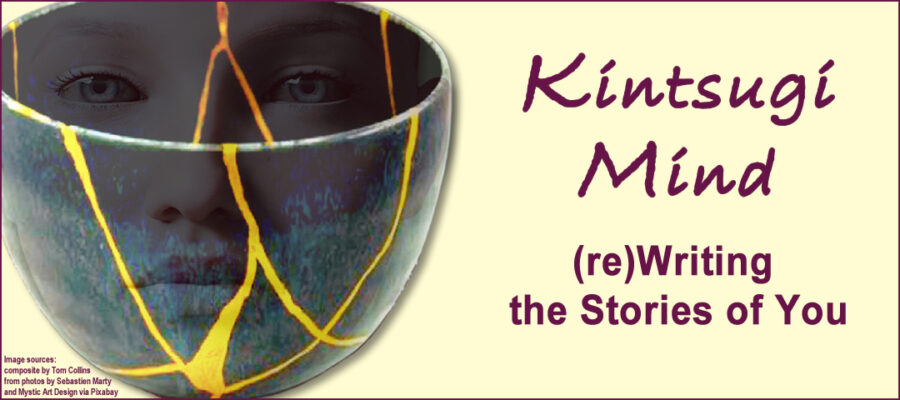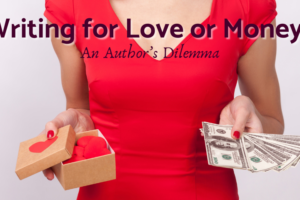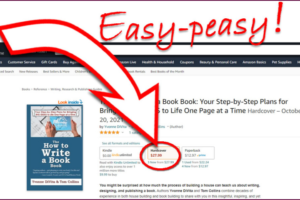Kintsugi Mind: (re)Writing the Stories of You
We all feel broken, sometimes, or in some parts of our being. Or as if we’re showing cracks on the outside, hiding stress fractures within. Perhaps more so, in this time of emergence after more than a year of survival mode through a global pandemic.
What if you found a simple, reliable tool for mending those breaks, sealing up those cracks, and facing the world more vibrant and confident than ever?
What if such results came from adapting a basic activity you’ve been doing since you learned to talk?
Kintsugi, as the art of being imperfect
A recent NYT op-ed essay by Emily Esfahani Smith prompted me to connect some dots with the research I’ve collected for my upcoming book, working title Perfectly Flawsome: How Embracing Imperfection Makes Us Better. I might not have stumbled on it myself, with its somewhat vague title, We Want to Travel and Party. Hold That Thought. But Yvonne flagged it for me, noting that it opens with a discussion of kintsugi.
I’ve written before about kintsugi and related Japanese concepts like wabi-sabi, so its no surprise that they’ll figure prominently in a book about embracing imperfection. Here’s how I introduce them in the current draft of Perfectly Flawsome:
My own efforts to let go of perfectionism and aspire to the practice of flawsome-ism have blossomed since I came across the Japanese art and philosophy of kintsugi, mentioned in the Introduction.
On a physical level, kintsugi refers to the Japanese art of repairing broken pottery, then sealing the cracks with lacquer and dusting them with gold powder. This method restores the broken item’s usefulness, but also makes the broken item more beautiful and valuable.
Recently, I’ve been digging a bit deeper into the philosphies surrounding kintsugi and how they can apply to other activities and our lives as a whole. A couple years ago, while reading A Craftsman’s Legacy, by Eric Gorges, I came across the one I think helps explain why the Japanese developed “golden repair” in the first place: wabi-sabi, which celebrates imperfection.
While I might quibble with his title of the chapter, “The Battle for Perfection,” Gorges quickly makes clear he really means excellence, noting that a battle for perfection is one “that each one of us is bound to lose.” He lists wabi-sabi among several ancient practices, some of which require intentionally “putting a flaw” in items from teacups to rugs to houses.
More recently, I found Candice Kumai’s book, Kintsugi Wellness: The Japanese Art of Nourishing Mind, Body, and Spirit. She delves into ten related principles from Japanese culture, including wabi-sabi, that together she calls “the work” you’ll need to do to practice kintsugi on yourself.
Here’s how she turns kintsugi from a practical art into a life-enhancing wellness practice:
“As you work toward [accepting your cracks], you’ll see that the most beautiful, meaningful parts of yourself are the ones that have been broken, mended, and healed.
“Learning is the key to kintsugi, and we never stop learning. . . . I am committed to . . . continuously improving every day.
“. . . Kintsugi is life’s way of saying, ‘nobody’s perfect.’ The path is not straight. In fact, your hardest challenges, deepest wounds, and greatest fears are actually among the most beautiful, precious, and admirable parts of you.”
Smith’s descriptions of kintsugi as both a practical art form and a philosphy of life tracked well with my own. But when she got to the part about how to apply it to the losses we’ve suffered and witnessed during the pandemic, I got really excited. Echoing Kumai’s admonition on doing the work, Smith advises stepping back from our eagerness to travel and party, because “if we want to emerge from this crisis whole instead of broken, we need to process what we’ve lost … [and] take the time to work through it.”
What came next and resonates so deeply with me was her specific advice on how to go about this processing. How to work through our grief, depression, and other traumas from all the losses that COVID-19 inflicted, loved ones, jobs, cancelled events, even our daily sense of security and normalcy. She wrote:
“What’s the best way to process these losses? We can, of course, seek help from a therapist or a spiritual counselor. But there is another powerful resource we can tap into: storytelling.”
Storytelling provides the gold; you become the artist
You’re likely familiar with the “self-talk” that goes on in your head all day, every day. Much of that chatter contributes to a narrative about who you are, your capabilities or limitations, where you came from, and where you’re going. These narratives are how we make sense of ourselves and how we fit into the world.
You’ve been telling yourself these “stories of you” since early childhood. Along the way, you’ve been adding chapters, characters, and plot twists as events and experiences needed to be woven in. But remember, I said storytelling is simple and familiar, though I know it’s not always easy.
Much of the time, we carry on these narratives subconsciously, without constructive criticism, either from our conscious selves or others.
But as Smith points out, for decades psychologists have been studying how our personal narratives affect our overall sense of well-being and mental health. When we tell “redemption stories” about how the bad things that happen eventually lead to good outcomes, we gain a sense of resilience and overall better mental health. Similarly, various categories of “growth stories” around how we learn and grow, both individually and in our various groups, correlate to well-being and mental health.
Those who tell “contamination stories” instead focus on what was good before, but was then ruined or contaminated by the bad event. As one research paper put it,
“Contamination sequences are strong predictors of depression, low levels of life satisfaction, and feeling that one is not able to make a positive contribution to others and to the next generation.”
Pretty serious consequences and strong reasons for making the effort to consciously subject our narratives to examination and critique. And to editing, revision, rewrites. That’s why we call it “doing the work.”
Well worth the effort, though, when you recall Kumai’s counsel that when we perform kintsugi art on ourselves, we “see that the most beautiful, meaningful parts of yourself are the ones that have been broken, mended, and healed.”
Broken, mended, and healed. That sounds like the redemption story sequence, all right.
Adding weight to the value of storytelling as a medium for personal kintsugi artists, Smith points to another decades long line of research, using short bursts of “expressive writing” about traumatic experiences. Participants writing for 15-20 minutes for as few as 3 consecutive days have shown a remarkable array of physical and mental health benefits, including:
- lower blood pressure
- fewer doctor visits
- improved immune system, lung, and liver functioning
- improved working memory
- reduced depression
- better mood and overall feeling of well-being
The benefits indentified even extend beyond the individuals’ health to include social and behavioral outcomes, like improvements in school grades, sports performance, and reduced absenteeism from work!
How does this kind of journaling exercise produce such benefits? Using computerized linguistic analysis, the researchers found that those who gained the most benefits progressed over the several days of writing from using more negative-emotion words to a higher percentage of positive-emotion words, along with incorporating more causal words (e.g., because, reason) and insight words (e.g., understand, realize). The researchers explained:
“In reading the essays of people who showed this pattern of language use, it became apparent that they were constructing a story over time. Building a narrative, then, seemed to be critical in reaching understanding. … [T]he act of constructing the stories is associated with mental and physical health improvement.”
The research acknowledges that our stories change over time, as new events both happy and traumatic must be incorporated to maintain our coherent personal narrative.
Which brings me to a provocative TED Talk by Zahra Al-Mahdi, The infinite alchemy of storytelling. It’s only 4 minutes long and I’ll embed it below, but the crucial message she offers for our storytelling revolves around the necessity for integrating the “multiplicity of stories” that make up our whole selves.
Complicating our task further, she notes,
“… history is not as static as we thought, that stories can be told, retold, read and reread. A change of context, change of perspective in hindsight can assign different values to everything and everyone around us.”
If you’re thinking that events around us are some kind of static reality that we inhabit, stop and think about your understanding of one big issue that took center stage right in the middle of the pandemic: race relations in America. The murder of George Floyd before our eyes and the subsequent protests, trial, verdict, and sentencing changed our context, eliminating the ability of any honest observer to deny or ignore the problem. On top of that, we learned about Black Wall Street and the Tulsa race massacre — most of us for the first time — forcing a significant revision of that part of our stories of American history.
And when we go about revising our context and perspective of the world around us, we also need to revisit how that affects our personal narrative. We need to re-engage in “the act of constructing” our stories that produce the wellness benefits noted above.
Al-Zahra tells us our multiplicity of stories “often come in repetitive patterns that can be rewritten and reread.” I think she should say must be rewritten, repeatedly, as we learn and grow.
I was stopped short by her closing analogy:
“Nothing and no one can be said to be good or bad in isolation of the story around it. It’s much like learning a new word. You have to use it in a sentence for it to make sense. And then to challenge its meaning, you begin to use it in an infinite amount of stories.”
By adopting a conscious, intentional practice of writing and revising, telling and retelling your story, you’ll become the kintsugi artist with the ability to reveal those “most beautiful, meaningful parts of yourself” through mending and healing the inevitable breaks and cracks. Golden repair.
Are we Kintsugi Editors?
All this talk of learning new words, of writing and rewriting, gave me a new perspective on what Yvonne and I do in helping people write and publish books. And in writing and publishing our own books.
We’ve labeled Yvonne’s work as “developmental editor” based on the distinctions from proofreaders and copy editors in the publishing world. As we noted in The How to Write a Book Book:
“… It can address plot holes or gaps, problematic characterization, and all other existing material. … Only once your manuscript has been cut, reshaped, revised, and developed will it be ready for a copy edit and proofreading.” (quoting Reedsy.com)
In the book, we analogized the overall writing, design, and publishing process to designing and building a house.
We call our combined program for writing, cover design and interior layout, and publishing the “Fully Developed Book Writing and Publishing Program.”
But our clients often refer to Yvonne as their “book coach” and we embrace that variation of our work story, too.
What’s that got to do with kintsugi?
Well, look again at the description of developmental editing. There’s a good bit of mending and golden repair going on there. And when Candice Kumai wanted to bring kintsugi art and philosophy into her life and make it real, she went to Japan and found a kintsugi master to work with.
That’s the level of commitment I now see in our clients. It’s the level of commitment we offer them, as well. Together we “do the work” to help them discover and reveal the beautiful, meaningful parts of their story that fit in the book they’re writing (and which parts to leave for their next book).
* * * * *
How might a kintsugi storytelling approach fit into your life? Your work?
What revisions do you need to make to gain some of the storytelling and expressive writing benefits discussed above?






2 Comments
Leave your reply.